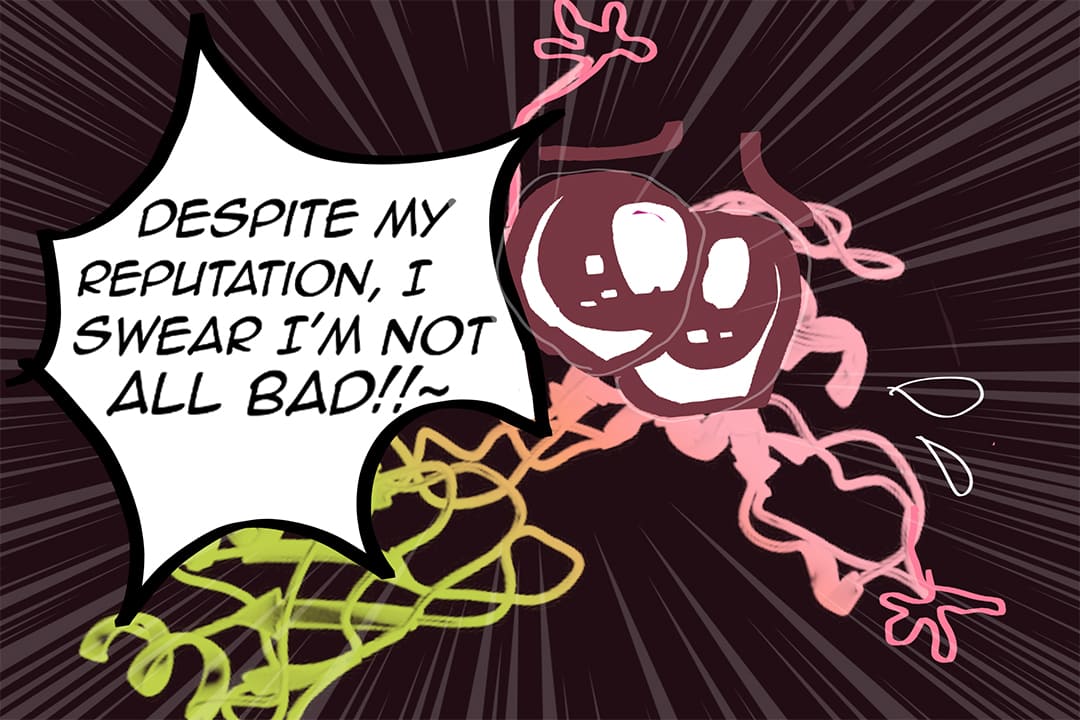Most infections arise when a virus or bacteria enters and disrupts internal processes within the human body systems. However, a more nuanced — and one might argue more dangerous — disruption is when pathogenic proteins known as prions disrupt the folding of essential proteins within the brain.
However, researchers recently discovered that prions may also be beneficial to the brain, and may even play a role in maintaining long-term memories.
What are prions?
Prions are abnormal, self-propagating, and disease-causing agents that induce misfolding in other specific proteins naturally found within the neurons of the brain. Prions disrupt cellular function in the brain by accumulating in infected tissue, which can eventually cause tissue death. After the tissue dies, it releases prions that can infect other cells and cause their proteins to misfold. This protein misfolding can eventually result in brain damage.
In humans, the misfolding of neural proteins can manifest as a variety of neurodegenerative diseases: Creutzfeldt-Jakob disease, which is characterized by a loss of memory, intellect, original personality, and balance; Gerstmann-Straussler-Scheinker syndrome, a rare disease characterized by abnormalities in gait, coordination, and balance; and fatal familial insomnia, which is when sleep difficulties are so severe that they lead to a coma and then death. Prion-induced misfolding can also lead to Alzheimer’s, Parkinson’s, or Huntington’s disease. In animals, prion-induced misfolding is implicated in Bovine Spongiform Encephalopathy, or mad cow disease, which is characterized by temperament abnormalities or coordination issues.
Kausik Si and Dr. Eric Kandel’s research
Proteins are crucial in forming short-term and long-term memories.
Short-term memory is formed by proteins that are already present in the brain. These proteins’ synapses undergo modifications and adjustments to contribute to the process of storing memories. Long-term memory is established by creating new proteins and making connections between neurons in the brain. A brain must maintain these connections in order for the memory to remain present beyond a few days.
However, the average half-life of a protein in the brain is only 14 days, and the hippocampus — which is involved in the conversion between short and long-term memory — is in a constant state of regeneration. So, you might begin to ask yourself, how can a memory sustain itself over a lifetime? Kausik Si from the Stowers Institute for Medical Research and Dr. Eric Kandel from the Columbia University Irving Medical Center asked the same.
Researchers in Si and Dr. Kandel’s lab made a discovery regarding long-term memory maintenance in a gene found in mouse neurons, which encodes for CPEB3, the cytoplasmic polyadenylation element binding protein.
In one experiment, they used a system that allowed them to repress the CPEB3 gene to examine its effect on learning and long-term memory. They found that when they suppressed the gene, the mice suddenly could not recall what they learned two weeks prior, offering support that CPEB3 contributes to long-term memory consolidation and maintenance.
Now, at this point, you must be wondering — what does this have to do with prions? Here’s the clincher: CPEB3’s amino acid sequence — the order of its components — includes a number of repeating glutamine amino acids, which resembled a pattern found in functional prion proteins the two researchers first found in Aplysia, the giant sea slug.
Si and Dr. Kandel discovered that these functional prion proteins can be found in two forms: the initial form, as well as a form that can make larger aggregates out of the initial form. The researchers proposed that upon learning something novel, neurons form new connections to establish long-term memory, and the initial form of the prion protein is converted into the aggregated prion form which then helps maintain this memory. Similar to how disease-causing prion aggregates continue to propagate, these functional aggregates maintain themselves by converting more proteins into aggregates.
While this study focused on functional prions in mouse neurons, Si and Dr. Kandel’s research might provide direction for tackling the dangerous internal mechanism of prion-induced protein misfolding. If this can be translated to human research, we could potentially develop a way to suppress the protein misfolding which leads to the manifestation of fatal brain disease.



No comments to display.